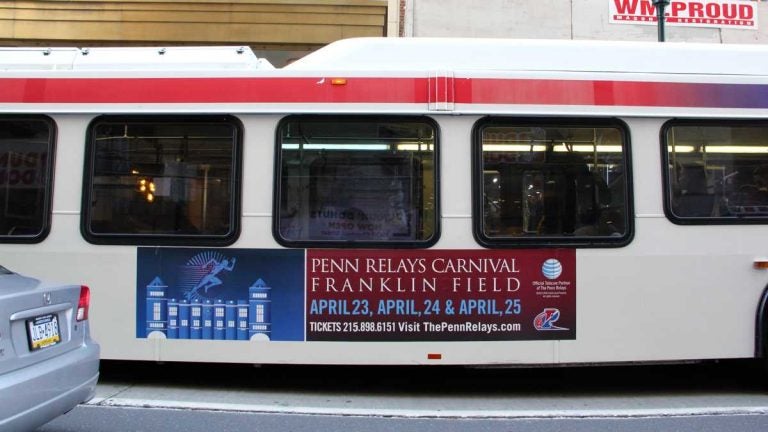Inspired by King of Prussia, West Chester ramps up campaign to restore rail service
The committee has spent the last four years figuring out how to restore the Chester County suburb's Regional Rail service, which was cut in 1986

(Bob Bruhin, EOTS Flickr Group)
This story originally appeared on PlanPhilly.
—
Down a long, quiet hallway, Jo An Kelton sat alone in Room 2b and called the Advisory Ad Hoc Committee to Reestablish Rail Service to West Chester to order.
Two members would call in by phone to this converted old classroom inside the otherwise empty former school serving as West Chester’s administrative offices while Borough Hall undergoes a renovation. The fourth committeeman couldn’t make it, and the seats reserved for two residents of the borough are temporarily vacant.
Without a quorum, no decisions could be made but there was still business to be done under the institutional fluorescent lights.
The committee has spent the last four years figuring out how to restore the Chester County suburb’s Regional Rail service, which was cut in 1986 due to low ridership and SEPTA budget woes.
In March, the Pennsylvania Department of Transportation and SEPTA completed a study looking at the feasibility of restoring the service. While the report found that extending the Media/Elwyn line to West Chester, which is Chester County’s governmental center, would be possible, it wouldn’t be cheap. The price tag is $380 million for a single track line. The cost jumps to $644 million for the two tracks necessary for the high level of frequent service needed to attract an estimated 2,000 riders a day.
At those costs and ridership levels, the restoration project wouldn’t be able to win the kind of federal grants that can pay for upwards of 80 percent of the project’s cost, the feasibility study concluded. And while SEPTA’s budget is in better shape than it was 20 years ago, the agency’s still strapped for cash.
Almost all of its construction budget is dedicated to maintaining and repairing the infrastructure it already has, not building more.
“Our capital budget is focused on the state of good repair projects,” said Liz Smith, SEPTA’s director of strategic planning. “In order for us to consider any additional restorations, we would have to complete projects in [the] 12-year capital budget [first], as well as procure additional railcars.”
But what the committee may lack in funding right now, it makes up for in faith.
“There are people out there, it’s just that they are quietly waiting,” Kelton said. “There is some pessimism because the borough started our committee in 2014 — it’s kind of hard to believe that it’s been that long — but we are making some progress, incrementally.
And now that Kelton and her colleagues know how much money they need, they can focus on getting it.
Regional funding for Regional Rail
West Chester is looking to follow a path trod by King of Prussia, which commissioned a team of consultants to produce a report on the economic benefits of extending the Norristown High Speed Line back in 2015. The report got people talking and now, SEPTA is gearing up to apply for federal New Starts funding for that project. If the transit agency wins the federal grant, Washington will cover up to 80 percent of the extension’s costs. While the Trump administration has been less supportive of urban rail projects than the Obama administration before it — and some worry the grant dollars won’t come — there is momentum behind the project and signs of progress that West Chester rail boosters envy.
The next step for Kelton and the committee is gathering the information they need to make their case. A consultant who works with Econsult, the same group that produced the King of Prussia report, attended the last committee meeting and the Center City firm is in conversation with the Chester County group about the possibility of working together.
But for the Philadelphia region, the West Chester project and others like it raise fundamental questions about how to pay for the transportation infrastructure needed to keep people traveling between home and their places of work and study.
Some 12,481 Philadelphians reverse-commute to primary jobs in Chester County, excluding federal employees, self-employed workers and some other categories of laborers, according to a new Pew Charitable Trusts report. Looking at a scatterplot map contained in the Pew report, it’s clear that employment centers for reverse-commuting city residents track along major roadways and regional rail lines.
“The enthusiasm is there, the ridership is there,” Kelton said.
Enthusiasm and train fares, however, don’t add up to $380 million, much less $644 million. And when SEPTA looks down the road, it sees a potential $315 million cut looming come 2022, when a dedicated stream of toll revenues from the Pennsylvania Turnpike is scheduled to sunset. Another threat is the increasingly partisan, tit-for-tat nature of federal spending — a problem for big-ticket projects in increasingly Democratic Southeastern Pennsylvania.
With all of that in the background, transportation planners in the region have begun to raise the idea of raising transit funds regionally.
Philadelphia’s recent seven-year transportation plan called for increasing the local contributions to SEPTA, which currently amount to just 11 percent of the authority’s budget, a fraction of what some peer metropolitan areas contribute to their transit agencies. And earlier this year, SEPTA released an Econsult study of its own to demonstrate its economic value to Harrisburg — or the five-county region — should state legislators prove unwilling to maintain its current level of funding.
“Everyone’s hope and expectation is that the gap will be resolved and transportation will be kept whole at the state level,” said Greg Krykewycz, associate director of multimodal planning at the Delaware Valley Regional Planning Commission. “There’s no guarantee that’s going to happen and that’s kind of the point: is that we don’t control our destiny the same way we would if we were talking about a local funding source.”
The increasing support for some kind of regional tax or fee to support transit has bolstered the West Chester committee’s spirits. “The City of Philadelphia report was encouraging in its acknowledgment that there’s a lot of regional, unmet needs out there,” said Tom Hickey, a committee member and chief development officer at Virginia Railway Expressway. “There’s a need for a regional solution as opposed to looking at this [on] a project-by project [basis].”
Establishing a new regional funding source for transit won’t be easy. The counties would have to voluntarily raise the funds; Bucks, Chester, Delaware, Montgomery and Philadelphia counties all agreeing to a non-binding arrangement to contribute a certain amount of money. Or the counties would have go to Harrisburg and pass new legislation.
But local funds have benefits over the region’s current reliance on federal and state largesse for major construction, said Krykewycz. “Regions that have been more successful in controlling their destiny — in building out regional transit networks — they tend to have done so with a much greater share of local funding,” he said.
Without the uncertainty and red tape that come with federal dollars, Krykewycz said, locally-funded construction projects can be built cheaper and faster.
If the West Chester committee were able to come up with the full price tag for building its rail line, SEPTA would reconsider its reluctance to pursue the project, said Smith.
“It certainly would open us up to have a different type of conversation with them about this,” she said. “The capital costs are probably the biggest barrier to this getting completed.”
And it’s a big barrier, but, for now, all the West Chester restoration committee is focused on the next small step in moving the project forward: getting more information.
“So, we will look for that next, and just move on from there,” said Kelton.
WHYY is your source for fact-based, in-depth journalism and information. As a nonprofit organization, we rely on financial support from readers like you. Please give today.






